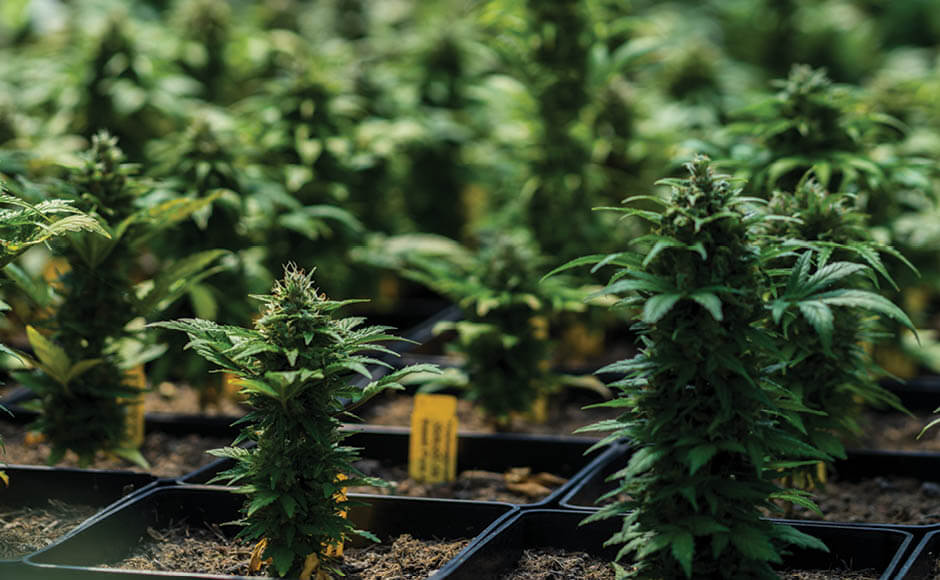Autoflowers are a type of cannabis that has only recently become popular in the commercial market. With their ease of growth and excellent outcomes, they are currently conquering the cannabis market by storm. Autoflowering cultivars produce excellent results in a short amount of time, typically completing the cycle from seed to harvest in as little as seven weeks.
Autoflowers are very easy to grow, but some general rules should be followed. This is no different than the rules when growing other plants or vegetables.
All plants are different, and while you can harvest successfully the first time you cultivate cannabis, there are several typical mistakes to avoid.
If you’re new to autoflower growing and need a helping hand or maybe want to learn how to cultivate autoflowering strains, here are a few things to get you started.
What are Autoflowers?
Table of Contents
Autoflowering cannabis strains are descended from a wild hemp strain known as “ruderalis” that was initially identified in Russia in the early 1940s.
Autoflowers, as the name implies, transition to flowering mode without the need for human involvement.
These are distinct from most strains, which are referred to as “photoperiod” strains. Photoperiod plants do not begin flowering until they receive precise signals from the sun that winter is approaching. Thus, they require special light schedules to trigger bud formation.
Rudimentalis plants, on the other hand, do not require any signal. Instead, ruderalis plants begin flowering at 3-4 weeks of age, regardless of the sun or light cycles, and their buds are ready to harvest only a few months after seeding.
Why Should You Grow Autoflowers?
- They’re a lot smaller. This implies they’re easier to conceal, tougher to identify, and thus a safer option with a wider range of growing locations.
- They develop swiftly, provide large yields for their size, and are even more pest and bug resistant than other marijuana cultivars. This makes them extremely easy to grow.
- Because of the shorter growing season, there are more autoflowering types available. Multiple harvests are extremely advantageous if you enjoy the growing process and want to try as many different strains as possible.
- In just ten weeks, you’ll be able to harvest your crop! They follow the growth timetable encoded in their DNA regardless of the lighting situation in your outdoor or indoor grow setup. They will bloom once a particular period has passed, not when the light changes.
- Autos are more robust than other cannabis plants because they have ruderalis genes. Remember, they’re based on plants that could survive in Russia’s harsh climate.
When to Plant
When it comes to growing autoflowers outside, timing is important. You don’t have to be concerned because autoflowers don’t require light to flower. Planting too early will lower yields, while too late will lower yields.
Frost is something that must be avoided at all costs. The majority of growers start planting when spring is barely around the corner. Depending on where you reside, you can sow the seeds as soon as the frost has passed. If you live somewhere where there isn’t any snow, you can plant when the temperature is between 22°C and 28°C (above 60°F).
Nutrients
Autoflowers, like any other living plant, require nutrients, but their delivery is a delicate balance.
Fertilizing too much or too little can harm cannabis seedlings, just as feeding them the wrong nutrients can.
Be careful to use a fertilizer designed exclusively for autoflowering strains and micro-doses rather than pouring on a large amount. Lightly fertilized soil is best for autoflowering seeds, as long as the plants are supplemented with vitamins B, enzymes, and fungus.
Growing Medium
The medium you grow your cannabis in makes a lot of difference.
Growing plants in hydroponic settings may appear to be a lot of fun, but if you’ve never done it before, the soil is your best bet.
Because autoflowers flourish in well-aerated soil, avoid utilizing clumpy clay soils. The finest potting mix for autoflowers is a soilless medium of equal parts peat moss or coco peat, perlite, some airy soil, and sand.
You can also grow autoflowers organically if you don’t want to bother with fertilizer at all. You may manufacture your organic soil in various methods, but you can start by purchasing some from your local store. Organic soil is nutrient-rich, making it great for those who don’t have much time.
Watering
Most plants will die if they are over-or under-watered. Yes, autoflowers require water to develop, but it’s vital that you only give it to them when they need it.
Even though the plants want water, it is evident that timing is critical. You may verify if the soil is dry by sticking your index finger in the soil; if it comes out moist, the soil is still humid. However, you won’t tell if the bottom is still wet, remove the pots and check the weight to perfect the timing.
A dry pot is light to lift, whereas a container filled with water is heavy. Water the plants only when the pot isn’t too heavy or light, as this will prevent the soil from becoming too dry or moist.
Week 1
This stage lasts for three days but can last as little as 24 hours.
Choose a potting soil mix or make your own with peat moss, compost, moistened perlite, and moistened vermiculture, as well as nitrogen-rich tablets with other vital nutrients — and dosage of beneficial fungi.
Week 2
Your seedling has now started producing energy from its light source.
If you’re growing plants indoors, LED lights are the way to go because they save energy and emit less heat. In an indoor autoflower grow system, you only need one light to create a large plant.
Week 3-4
The vegetative stage of your plant has arrived.
That is to say. You should concentrate on establishing the finest possible environment. Low-stress training allows you to change up the environment. Reduce the humidity to 50%, the temperature to 68 degrees, and feed your plants twice a week.
Weeks 5 and 6
This is your first look at the fruits of your labor.
During week 5, sticky, resinous buds will make their initial appearance, offering you a taste of what’s to come. Maintain 60-65% humidity level while raising the temperature to 20 and 24 °C. Every day, drink a full liter of water and take vitamins twice a week. Look for phosphorus, calcium, magnesium, and potassium in your supplements.
Week 7
In week 7, you’ll concentrate on environmental preservation.
If you’re going to keep your plants outside, ensure the weather isn’t too hot or too damp. Check the humidity if they’re inside. You should be close to 40%.
Weeks 8 and 9
Week 8 is the start of the flushing process.
This means you should provide water to your plants. You do not want any of that stuff in your final harvest. Flood the plant’s soil with water to eliminate any excess chemicals before it can eat any more.
Now is also the time to conduct some minor pruning. Remove the little fan leaves from the bottom nodes using shears. Defoliation allows plants to absorb more light while reducing the risk of fungal growth.
Weeks 10 and 12
It’s finally harvest time!
Depending on your strain, it could take anywhere from 10 to 12 weeks for you to be ready to harvest. When the majority of the trichomes are whitish, and the pistils are brownish-red, you know it’s time. The fan leaves may appear rust-colored or otherwise discolored after cleaning your plants; this is acceptable.
Plant Pruning
While pruning (particularly topping) can be done in a good and beneficial way with autoflower marijuana plants, pruning ordinary marijuana plants requires certain changes. Pruning, for example, should be done early in the life of your plants to avoid impeding their vegetative growth later on.
Many producers, however, believe that pruning autoflower marijuana plants is a bad idea and should be avoided at all costs. They claim that trimming the autoflowers will reduce the crop.
Low-Stress Training
Instead, the best way to manage auto height and growth is to utilize low-stress training (LST), which entails bending the branches and holding them down using gardening wire or soft ties.
If you want to do LST with your autoflowers, get started as soon as possible, but be delicate so your plants don’t break.
Conclusion
Autoflowers will be enjoyable and simple to grow for both novice and experienced growers.
Whether you choose to produce autoflowers indoors or outdoors, as you’ve seen, the majority of the procedures are similar to those used to grow ordinary cannabis strains, with a few notable exceptions.
Autoflowering seeds are pretty easy to come by on the internet.
A growing number of reliable websites are selling them. It’s easier to explore and learn about the numerous strains you can grow when you buy online. Online merchants frequently offer a vast range.
If you want to get off to a good start with your next growth cycle and reap all of the benefits that come with autoflowering cannabis, start with high-quality seeds from renowned seedbanks like Homegrown Cannabis co.

